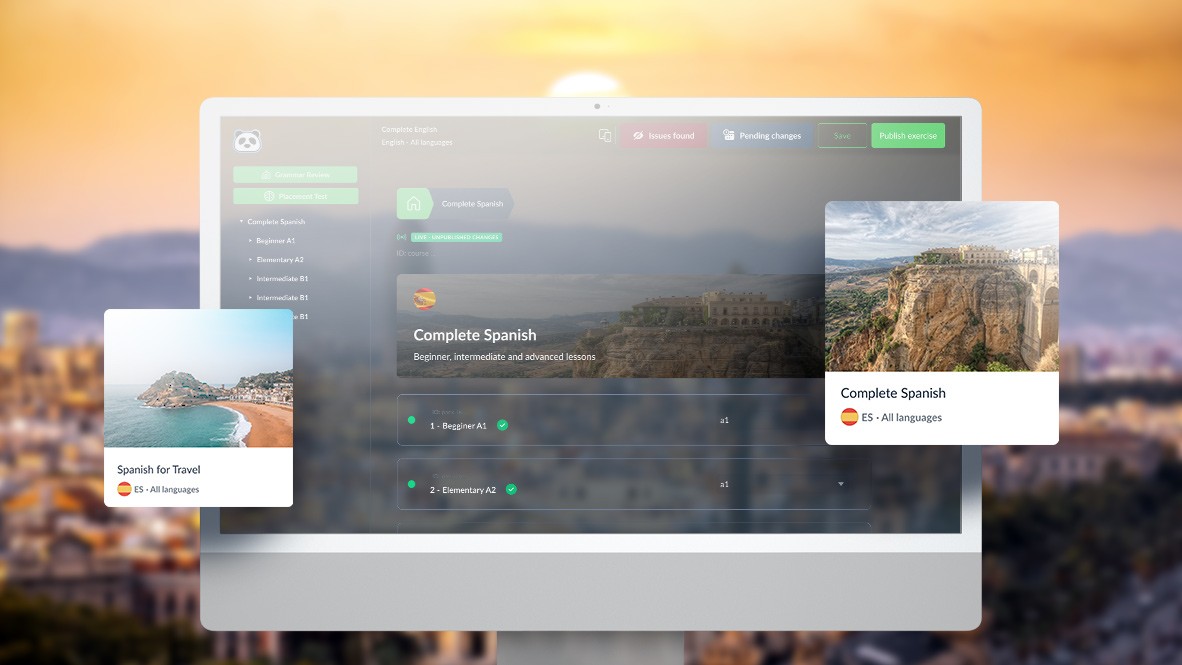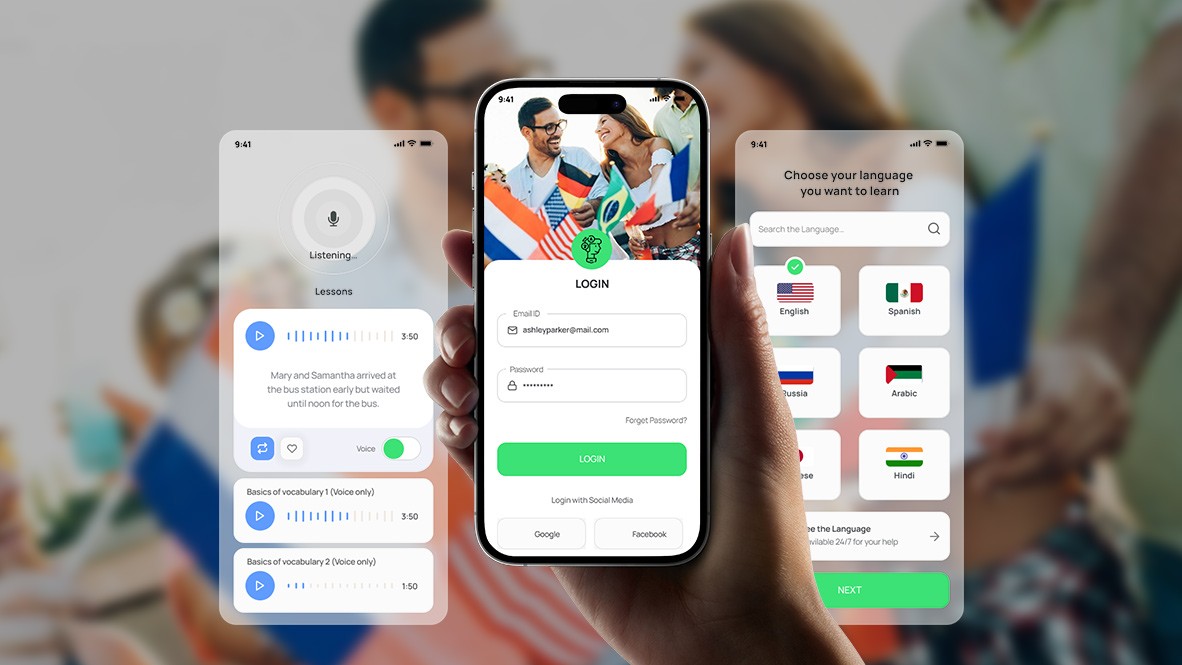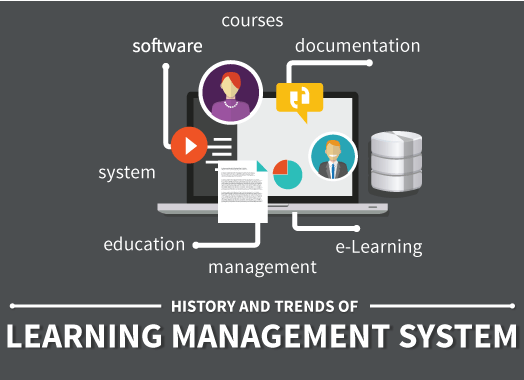Get to grips with the best EdTech development practices backed by real project experience
“No student will leave unhappy, no profit will slip” — the motto that is likely to fuel your decisions if you’re on the way to build a red-hot educational app. But how do you turn it into more than just a bald claim?
The Oxagile team of EdTech software developers and business analysts will decode the steps of meaningful eLearning app creation that is bound to gain a reputation of an exciting and trustworthy educational source.
Based on the extensive experience, they’ll cover all nuances that should be given attention to during the mobile learning app development workflow, take you through the process of conscious creation, in contrast to “developing an app for the sake of developing”, and end with tips, advice, and rethought common practices that can be implemented differently and more effectively.
Identifying opportunities in today’s educational apps market
Fortunately, there’s little necessity to weigh up the pros and cons if you want to develop an educational app in 2024, since all the current market statistics and future predictions eloquently illustrate the stable growth of the industry and the revenues of everyone involved:
- As of the first quarter of 2022, educational apps ranked 3rd in popularity on the Apple App Store, after games and business apps. On the Google Play Store, educational apps held the second position, trailing behind games.
- The educational app sector generated $7 billion of revenue in 2022, which is a 7.2% increase on the previous year.
- As per the findings of a study conducted by IMARC Group, the global market for educational apps is projected to show a compound annual growth rate (CAGR) of 25.1% from 2023 to 2028.
- Another report by Technavio states that the market will reach $70.55 billion by 2025.
Factors that nourish the growing demand for eLearning apps both from users and large businesses:
- Migration of the learning world online due to pandemic. Educational establishments moved to distance learning, some job positions were made redundant making workers quickly retrain, and more people started picking up language learning as a hobby to pass the time.
Expert perspective
“Though it might seem like this pandemic period has already formed intense competition with a variety of eLearning apps, it’s apparent that many new ones are taking over the ecosystem with fresh ideas, niche solutions, or by offering multifunctional apps that compile the best practices of existing apps on the market.”
- Shift towards flexibility and applicability. The concept of education is moving towards simplified processes — students progress at their own pace and tailor their learning experience to individual needs. And lengthy, voluminous courses are switched with express, concentrated learning experiences.
- Saving time and money on teachers. When you build an educational app you can automate administrative tasks such as grading, attendance tracking, and lesson planning, as well as leverage AI-powered tutors and chatbots, which will enable you to involve teachers only at some stages of developing the collection of educational resources and materials.
- Going mobile. The online format eliminates concerns about missing classes or assignments since the materials are readily available and can be accessed at any time, without any constraints of geographical boundaries and time zones.
- Learning as a trend. Today, being educated is undoubtedly prestigious and trendy, just as collecting certificates and diplomas on your LinkedIn profile to showcase the continuous pursuit of knowledge.
Besides, instead of finding new specialists, companies opt for improving the qualifications of their employees and helping them master new skills, thereby turning apps for corporate-level training into the next big thing.
Latest industry trends to watch for
Drawing from our experience and a comprehensive analysis of the market, the current top-ranking applications are those that tap into the following hottest EdTech trends:
- Widespread implementation of video content. The advancements in technology let educators create an educational app that integrates various video-based features that can cover almost every side of the product, from delivering lectures, tutorials, and presentations to live conferencing in virtual classrooms, conducting interactive assessments, or implementing proctoring solutions to eliminate cheating during final exams or certifications.
- Gamification. This technique includes something giving that pleasant “Yay, I did it!” feeling. So when you develop an educational app, it makes sense to include points, achievements, leaderboards with the follow-up virtual rewards or privileges, features of unlocking new content with progression or storytelling mini-games to make learning more about fun and entertainment, rather than about necessity and drilling.

- Microtraining, also known as microlearning. This approach delivers small, focused units of educational content, that usually represent breaking down complex topics into easily perceived ideas. This makes information perfect for fast-paced learning needs.
- AI-powered features. From personalizing the learning experience and adjusting content to meet the specific needs and preferences to providing tutors with valuable insights on a learner’s performance, behavior, and engagement — AI and ML easily maximize everything that keeps students motivated and engaged.
- Developed system of analytics. A common feature that unites those who have achieved success on the market, from giants to small startups, is using an efficient process of collection, analysis, and interpretation of all data related to the app.
Expert perspective
“Unlocking the power of audience segmentation, real-time monitoring of ad performance, analysis of user behavior and their satisfaction with the content goes beyond highlighting the areas that require optimization right now. It gives the chance to forecast future trends, user preferences, and even campaign results.”
Educational app types that shape the industry

There are two main categories of educational applications, divided by the type of interaction: “Human-Machine” and “Human-Teacher”. In case of the “Human-Machine” apps, the interaction takes place directly between a student and a computer program, where the platform serves more as an interactive tutorial used by a student on his/her own.
The “Human-Teacher” apps, on the other hand, imply that the interaction takes place between the teacher and the student. Such interaction can be organized through a peer-to-peer approach too, where students play the role of both learners and teachers, sharing knowledge and experiences with each other.
Expert perspective
“It’s important to set apart the category of b2b or corporate training apps. These LMSs with distinctive technical nuances are mainly developed for companies and usually establish a hierarchy where the manager can track the progress of their employees. This allows the executives to be aware of their team’s progress, learning outcomes, and needs. An important part of such LMSs is integration with corporate services, which allows training to be effectively used and adapted to specific needs and processes within the company.”
If we delve deeper into the content of educational apps, we’ll come across an array of options, approaches, and formats that can be used to deliver educational content, such as:
- Apps for kids to facilitate their development
- Apps for language learning, like Busuu, Duolingo
- Apps for specific subject learning or exam preparation
- Apps offering supplemental and reference materials
- Apps designed to cater specifically to online courses, like Coursera or Udemy
- Apps for planning, scheduling and classroom curriculum
- Apps to store teaching material
- Grading and testing apps to assess student progress
Steps of building a high-end educational app
Starting a project from scratch might sound overwhelming, but fortunately when it comes to educational app development, there’s a science and an art to it with very defined elements and stages. And loads of projects that we delivered prove that the most practical way to go is by basing all decisions and actions on the combination of the Double Diamond model and ProCD framework.
Double Diamond model
1. Discovery phase
To ensure smooth and effective mobile learning app development, one needs to carefully study the world of potential users, conduct research on their needs, wishes, and pain points. In case you build an educational app for a certain client, it’s also essential to gain a profound understanding of why they need to implement a particular idea, get proof that it will bring them profit, etc.
Conducting a thorough analysis of the educational app market and competitor research is another part of this stage that enables adding to the original idea extra changes and ensuring all solutions are truly tailored to meet the needs of the target users.

2. Definition phase
At this step educational app developers describe tasks, elaborate milestones, define deadlines and metrics that we want to achieve/what we will measure, choose between preliminary A/B testing or launch into production without A/B tests.
3. Development phase
Ensuring the viability of an idea and its alignment with market demands is crucial. This involves verifying if there is a demand for the concept and if it satisfies the “market fit” criteria. And the Minimum Viable Product (MVP) is the exact instrument ensuring that the product, along with its specific features, caters to the needs of the market.
The MVP implies that once we create a concept, the next step is to develop the initial working version of the product, which can be shared with a select group of users. Maintaining continuous communication with these users and gathering feedback enables testing the existing hypotheses, as well as formulating new ones.
Expert perspective
“When it comes to startups, business intelligence and serious work with requirements slow down the process of developing an educational app. But at the end of the day, most hypotheses are not confirmed, making useless all the time and effort spent to build an educational app. So, the best option is to always implement and verify ideas as quickly as possible with the MVP.”
4. Delivery phase
After testing, and in case of successful release of the product, the idea can continue its development and we can safely create an educational app. When the product is launched, the data is tested for a certain period (a week, a month, six months) and then conclusions are made as to whether the idea is worth pursuing further or it’s better to pause, go back, and reconsider the actions taken.
Expert perspective
“To get the process of educational app development off to a perfect start, it is important to have:
- a clearly defined MVP goal, as its creation process should not stretch over six months or a year — it should be a fast development;
- powerful skillful educational app developers and other experts, maximally T-shaped.”
ProCD framework
Unlike just fulfilling individual client requests or fixing bugs, we can create an educational app from its very start to full completion, including all stages of development. Such experience with full-cycle projects enabled us to develop and successfully implement our own ProCD framework, which structures the process, offers specific approaches, and defines steps to be taken.
Step 1. Learn
There are 3 fundamental questions at the core of all processes when we develop an educational app, which are essential for a successful workflow.
- Who is our target audience?
- Who are our competitors? Why are we better than them?
- How will we meet our target audience’s needs?
Answering these questions is vital to understand the competitive landscape and then come up with specific actions that will best serve the audience.
Step 2. Build
This is the stage of direct implementation of the plan drawn up in the Learn phase. This is where the focus is on creating the overall structure of the application, defining components, designing the user interface, and coding the application according to the defined architecture.
Expert perspective
“When we create an educational app, we pay particular attention to the tools we use to make sure they meet the needs of each client. But while it’s crucial to offer our recommendations on the selection of tools that are best suited to a particular project, it’s also great to be open to new ideas. So, if a client shows, for example, an interest in the “Jobs-to-be-Done” methodology, we will be happy to apply it and experiment together.”
Step 3. Measure
This step implies that as soon as we complete some new functionality, we need to understand if it turned out as expected.
We actively study and analyze the collected feedback and, based on this evaluation, we decide on whether to continue developing this idea or explore alternative paths.
Expert perspective
“All these steps involve cyclicality, meaning that we don’t gather market information, target audience data, and settle for the results just once — this process happens continuously.
For instance, if we want to implement a new feature, we check if anything has changed in the market. Then we gather information about how we developed that feature, realize that we are on the right track, achieving great results, and can start improving it.
We take all this into account when planning the next scope, adding new elements, conducting further research, reaching out to our customers, asking new questions, and exploring new competitors, then we set off to build again.
In other words, planning, executing, and evaluating the results is an endless iterative process.”
The process timeline
If a client comes to us with a desire to approach the matter thoroughly and make an educational app by all canons, it would be beneficial to begin with a discovery phase (which can take 1-2 months, or in urgent cases, 1-2 weeks).
If there is no such opportunity, we can proceed with starting the Learn step in its most basic form, gather overall information on what needs to be done and start building. During the process of building the application, we simultaneously collect data about the client and their target audience. This approach is less efficient, but yet enables a quicker product launch.
The best part is that thanks to our vast expertise, we’ve created templates for both of these options. So, whether a client wants to have a comprehensive discovery phase or prefers working based on testing every hypothesis — we can offer them a well-defined process with clear steps.
Estimate your app development timeline
Take advantage of a detailed template breaking down each step of the workflow and uncover the ways to reduce your time-to-market.
Required features for every educational app
Since the selection of features greatly depends on how the product is positioned, it is crucial to treat each unique educational app on an individual level. However, to provide some concrete illustrations, let’s explore some basic functionality on the example of typical language learning apps.

Core features include:
- Authorization (which is most often needed to keep track of the user)
- Subscriptions
- Push notifications
- Web version
- Content creation and management
- Content consumption (access to all materials, tests, and exams)
- App performance monitoring
- User analytics
Advanced features consist of:
- Notification systems for sending out info and alerts to users
- Community, including forums and chat rooms
- Content personalization, including the use of AI to adapt materials to specific users
Expert perspective
“The creation of certain features in language learning apps is also often driven by the needs of a client, which can generally be subdivided into business and technical.
Business features may include:
- Login via university accounts
- Integration with third-party systems, e.g., for enabling additional functionality
Whereas technical feature may comprise:
- Proper content distribution network (CND) for videos to ensure fast downloads
- Architecture built in compliance with GDPR, where encrypted user data is stored in secure locations
- System scalability (to support 1 million users, for instance)”
Development team structure
In every project, the team’s composition depends on:
- The amount of work to be covered and the complexity of the work;
- The technical component (whether a web version is planned, etc.);
- Financial capacities.
An example of a team that will excel in developing an educational app includes:
- Product Manager
- Scrum Master
- Business Analyst
- Developers
- DevOps
- UI/UX designer
- QA engineer
Expert perspective
“The team must be self-sufficient, cover all current needs, and grow or shrink to fit the needs and plans of the business.”
Tech stack

How much does education app development cost?
Since there are many factors, there isn’t an instant and precise answer to the question of cost estimations. Besides, it depends on the number of professionals who are handling various areas of the development process, raising the associated costs.
However, on average, in the first stage of education app development, which is MVP with basic product functionality sufficient to present its potential and collect feedback from users, the company spends from 1 to 3 months and invests about 50 to 100 thousand dollars.
After the successful completion of the MVP, the company moves on to the development of the full production version, working out the functionality and optimizing performance. This stage usually takes about 1 year and requires an investment of about $1 million.
Monetizing an educational app
eLearning apps offer various payment options to cater to different user preferences and monetization strategies. Let’s explore some of these options:
- Freemium (free apps with optional upgrades)
- Subscription (apps with recurring fees)
Expert perspective
“The freemium model, which is a combination of free and paid content, is quite successful today in the world of mobile learning apps as it provides an opportunity to attract a large number of users by giving them a chance to try out basic functionality for free and see if the product meets their expectations.
On the other hand, the subscription model can cause certain issues: users, especially in a saturated app market, may face a dilemma in deciding whether to pay to use your eLearning app, or turn to the many free alternatives that are currently on the market.”
- Ad-supported (free apps with ads)
- Paid apps (apps with a one-time purchase requirement)
Expert perspective
“Usually, advertising goes hand in hand with free subscriptions. And while using ads through Google AdWords is not particularly good in educational apps, developers often bundle ads with their product partners.”
Conclusion
And while these are the core elements worth considering before starting the development of an educational app, there are still many factors, pitfalls and intricacies businesses need to be aware of: from the right ways of transforming business ideas into clear development requirements to calibrating processes and scaling the project with cutting-edge technologies.
So, if you would like to find out more tips and insights from our experts to get through development challenges faster and cost-effectively — contact us, and we’ll share our hands-on product development experience, as well as EdTech domain knowledge.
























